
|
Available in LEADTOOLS Multimedia toolkits. |
Introduction
The LEADTOOLS Multimedia SDK is designed to provide you with all of the tools you need to create professional, high-quality multimedia applications. With it you can add multimedia functionality such as Capture, Play, and Edit, as well as the latest DirectShow filters and multimedia file support . You can load/convert to and from many common file formats, such as WAV, AVI, ASF, WMA, WMV, MPEG-1, MPEG-2, OGG, FLV, and others. All in all, nearly 100 formats, media types, and subtypes are supported, with full control over compression quality .
Add-on modules are available to enhance these capabilities. The LEADTOOLS DVD Module adds functionality for programmatically creating, capturing, authoring, burning, and playing DVD images. The LEADTOOLS Video Streaming Module is perfect for developers who need to implement video conferencing or serve videos on demand, using a standard IIS web server or the Microsoft Media Server. The LEADTOOLS MPEG-2 Transport Module can be used to play and process MPEG-2 Transport Streams used by satellites and UAVs (Unmanned Aerial Vehicle). The LEADTOOLS DVR Module can be used to create and play DVR files, and adds DVR support to the Capture, Convert and Play objects.
Key Features
Key Features
The LEADTOOLS Multimedia COM provides dynamic link library (DLL) functions that can perform the following tasks:
Multimedia Capture :
Create applications that can capture from WDM, native DirectShow including DV , Video for Windows capture devices, control DV devices
Capture audio or video data to a file.
Capture audio or video data to a sample.
Multimedia Playback :
Create applications that can play all formats supported by DirectShow. Get support for DVD navigation, saving player settings to files and streams
Play an audio, video or multimedia sample.
Play an audio, video or multimedia file.
Multimedia Conversion :
Add features to your application so your users can convert to and from AVI, Windows Media content, WAVE, and MPEG1 Audio (MP3) formats, select DV devices for output
Convert an audio, video or multimedia file to another file type.
Convert an audio, video or multimedia file to a multimedia sample.
Convert a multimedia sample to another multimedia sample.
Convert a multimedia sample to a multimedia file.
Multimedia File Formats :
Add support for the most popular multimedia formats ( AVI AVI (Audio Video Interleave) is a file format defined by Microsoft. It is the most common format for audio/video data on PCs. AVI files can have one or more video streamsand one or more audio streams. The video and audio streams can be compressed using various compressors (MCMP, JPEG, MCMW, MJ2K, H263, H264, MPEG-2, MPEG-1, MPEG-4,Vorbis, MP3, AC3, AAC, and many others). Each compressed file needs a decompressor Also known as a decoder Also known as a decompressor, this is a module or algorithm to decompress data. , this is a module or algorithm to decompress data. to be played or converted. This means that even though two files have the same extension they may not be similar. You might be able to play one AVI file because you have its decompressors, but you might not be able to play another because you do not have its decompressors. Or you might have the audio decompressor but not the video decompressor--in which case, you would hear the audio, but not the video. You need to have both the audio and video decompressors to play back both streams. , ASF ASF stands for Advanced Streaming Format because it is designed to be viewed while it downloads (streams) from the Internet. This is one of the formats used by Windows Media Player. It is a file format that has audio and video streams and is designed to run over networks like the Internet. It contains streamin gaudio, video, slide shows, and synchronized events. The video and audio streams can be compressed using various compressors (MCMP, JPEG, MCMW, MJ2K, H263, H264, MPEG-2,MPEG-1, MPEG-4, Vorbis, MP3, AC3, AAC, and many others). Each compressed file needs a decompressor to be played or converted. This means that just because two files have the same extension they may not be similar. You might be able to play one ASFfile because you have its decompressors but you might not be able to play anotherbecause you do not have its decompressors. See also: <WMV> , WMV WMV (Windows Media Video) is a file format developed by Microsoft. WMV files have audio and video streams. The video and audio streams can be compressed using various compressors (MCMP, JPEG, MCMW, MJ2K, H263, H264, MPEG-2, MPEG-1, MPEG-4, Vorbis, MP3, AC3, AAC,and many others). If you cannot play the file then you do not have the codec A COmpressor combined with a DECompressor, or encoder Also known as compressor, this is a module or algorithm to compress data. Playing that data back requires a decompressor, or decoder. and a decoder, which allows you to both compress and decompress that same data. to decompress the file. If you cannot play the file, then the file cannot be converted. , WAV The WAVE file format is used to store digital audio data in raw form and is a standard CD quality audio format that requires a large amount of memory (10 MB for 1 minute). , OGG OGG is the name of Xiph.org's container format for audio, video, and metadata. Its default audio compressor is called Vorbis. Vorbis compression offers better quality than MP3 and yields a higher compression ratio. Ogg Vorbis is different from other formats because it is completely free, open, and unpatented. OGG files can have oneor more video streams and one or more audio streams. The video and audio streams can be compressed using various compressors (MCMP, JPEG, MCMW, MJ2K, H263, H264,MPEG-2, MPEG-1, MPEG-4, Vorbis, MP3, AC3, AAC and many others). Each compressed file will need a decompressor to be played or converted. This means that even though two files have the same extension they may not be similar. You might be able to play one OGG file because you have its decompressors, but you might not be able to play another because you do not have its decompressors. Or you might have the audio decompressor but not the video decompressor-- in such a case, you would hear the audio, but not the video. You need to have both the audio and video decompressors to play back both streams. , FLV [Flash Version 6 format files have the extension .FLV. They use the FLV multiplexer, H.263 video compression and MP3 audio compression] , F4V (Flash HD) [Flash Version 9 format files have the extension .MP4 or .F4V. They are also called "Flash HD" files and they use the ISO multiplexer, H.264 video compression and AAC audio compression] , MPEG-2 MPEG (Moving Picture Experts Group) formats have the extension .mpg or .mpeg. MPEG files can have one or more video streams and one or more audio streams. The video streams are compressed using MPEG-2 compression scheme. The audio streams are compressed using the MPEG audio or AC3 compression scheme. Each compressed file needs a decompressor to be played or converted. This means that just because two files have the same extension they may not be similar. If you have an MPEG-2 video decoder you will be able todecode most MPEG-2 videos but since MPEG files can contains two types of audio, you may not be able to play all MPEG files unless you have both AC3 and MPEG audio decoders. , MPG MPEG (Moving Picture Experts Group) formats have the extension .mpg or .mpeg. MPEG files can have one or more video streams and one or more audio streams. The video streams are compressed using MPEG-2 compression scheme. The audio streams are compressed using the MPEG audio or AC3 compression scheme. Each compressed file needs a decompressor to be played or converted. This means that just because two files have the same extension they may not be similar. If you have an MPEG-2 video decoder you will be able todecode most MPEG-2 videos but since MPEG files can contains two types of audio, you may not be able to play all MPEG files unless you have both AC3 and MPEG audio decoders. , ISO The ISO base media file format is defined in the ISO/IEC 14496-12 specification. It should NOT be confused with the ISO disk image used for CD and DVD images. The ISO base media file format is used in a variety of popular file formats: MP4, 3GPP, QuickTime, Flash HD (H.264), AVC. , PSP thumbnail, and MPEG-2 DICOM).
Multimedia Compression :
Add support to your applications for compressing individual samples with any available DirectShow filters (Memory to memory).
Multimedia Processing :
Add to your applications the ability to process AVI, Windows Media content, WAVE, and MPEG1Audio (MP3) formats or data as it is captured using DirectShow filters. Nearly 100 formats, media types, and subtypes are supported
Use the LEAD Video callback DirectShow filter to use any of the 200+ image processing functions to process movies during playback, conversion or capture
The Multimedia SDK includes release versions of some LEAD Video/Audio Codecs and filters. Click here for a complete list.
Also included are evaluation versions of all the LEAD Audio/Video Codecs and Filters. Click here for a complete list. For pricing on these DirectShow filter client licenses, contact Sales@LEADTOOLS.com .
Burn a DVD . LEAD's DVD conversion capability also allows you to convert a DVD to other multimedia file types. However, due to U.S. and international copyright laws, LEAD requires a special license agreement before providing the customer access to this capability. To see if you are eligible to obtain such a license, contact: licensing@leadtools.com
Stream multimedia content via the web.
For more information, see the Feature Diagrams below.
The following add-on modules are available for the Multimedia SDK:
LEADTOOLS Video Streaming Module
LEADTOOLS MPEG-2 Transport Module
Nearly 100 example programs and executable demos are included in all LEADTOOLS products. The executable demos provide a quick and easy way to evaluate the Multimedia features and performance. Examples include:
Audio Video Detection demo (AVDetection.exe)
Audio replace demo (AudioReplace.exe)
MediaInfo demo (MediaInfo.exe)
Look for these executables in the different Bin subdirectories of the root installation directory for LEADTOOLS (for example, C:\Program Files\LEAD Technologies, Inc\LEADTOOLS 16\Bin\CDLL\Win32).
The LEADTOOLS DVD Module includes several demo executables. These include:
DVD burner demo (DVDBurner.exe)
DVD Authoring demo (DVDAuthor.exe)
The LEADTOOLS Video Streaming Module includes several demo executables. These include:
Video Conferencing demos (NetServer.exe and NetClient.exe)
The LEADTOOLS MPEG-2 Transport Module includes several demo executables. These include:
MPEG2 Transport demo (MPEG2Transport.exe)
Convert KLV demo (ConvertKLV.exe)
The LEADTOOLS DVR Module includes several demo executables. These include:
DVR demo (DVRDemo.exe)
LEADTOOLS Multimedia COM features require that DirectShow 8.0 to be installed. There are also a number of files that you must include when you build your application .
The Multimedia features come in a WIN32 edition that can support development of software applications for any of the following environments:
Windows 98
Windows 2000
Windows Me
Windows XP
Windows Vista
Burn a DVD:

Capture to file:

Capture to samples:
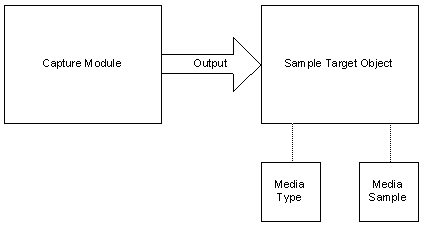
Play a sample:
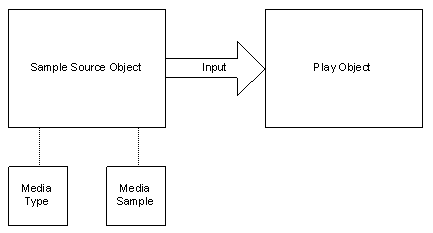
Play a file:

Convert a file to a file:

Convert a file to a sample:
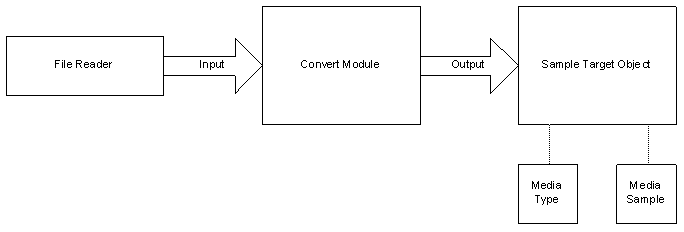
Convert a sample to a sample:
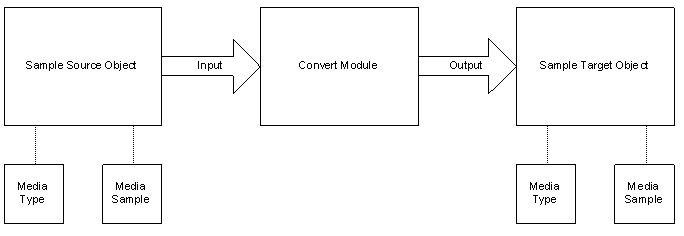
Convert a sample to a file:
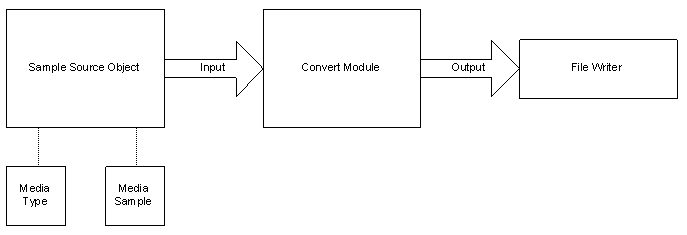
Convert a DVD to a file (requires a special license. For more information, contact: licensing@leadtools.com ) :

See Also: